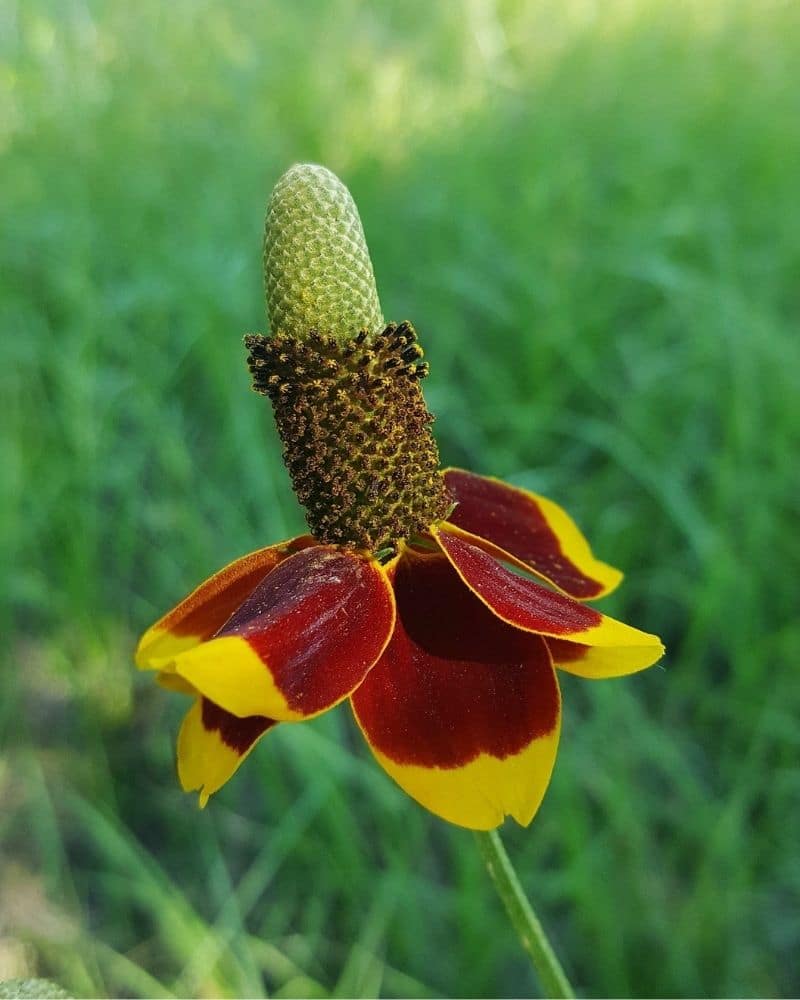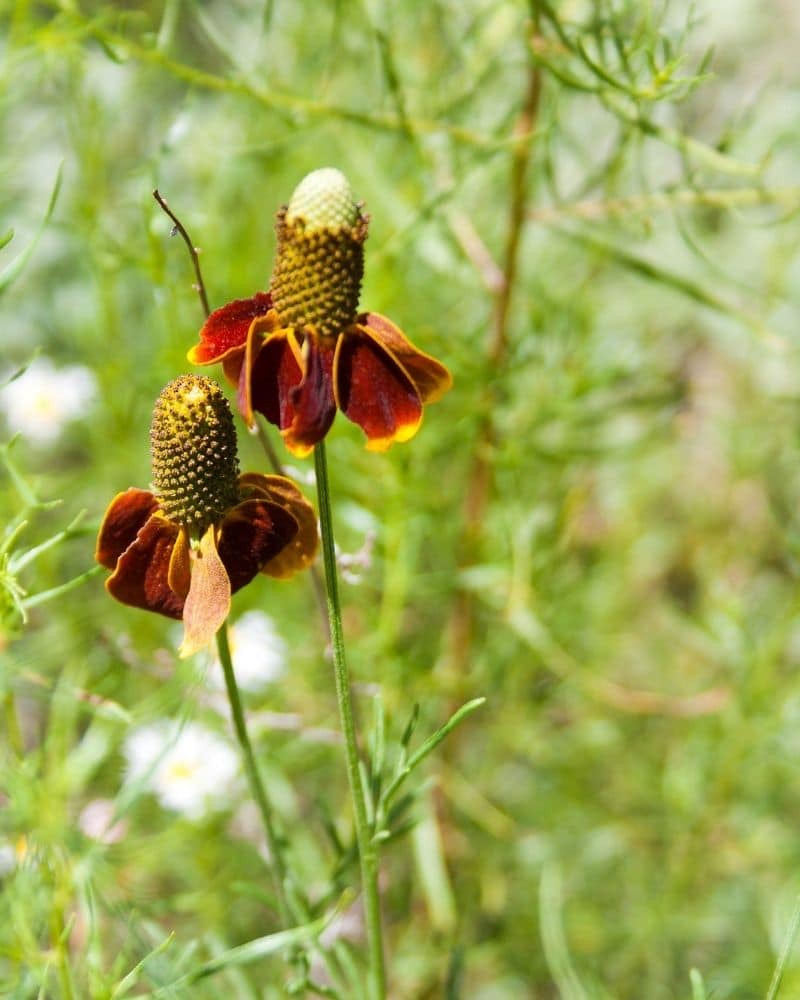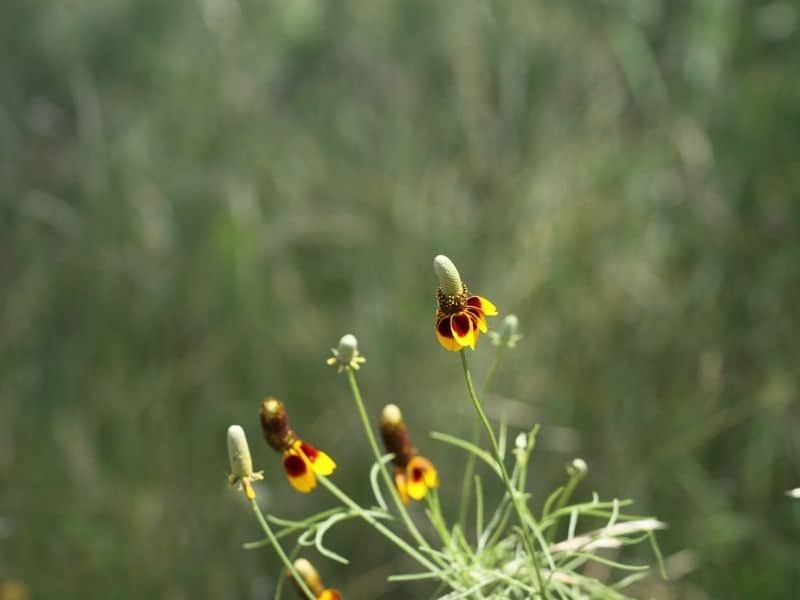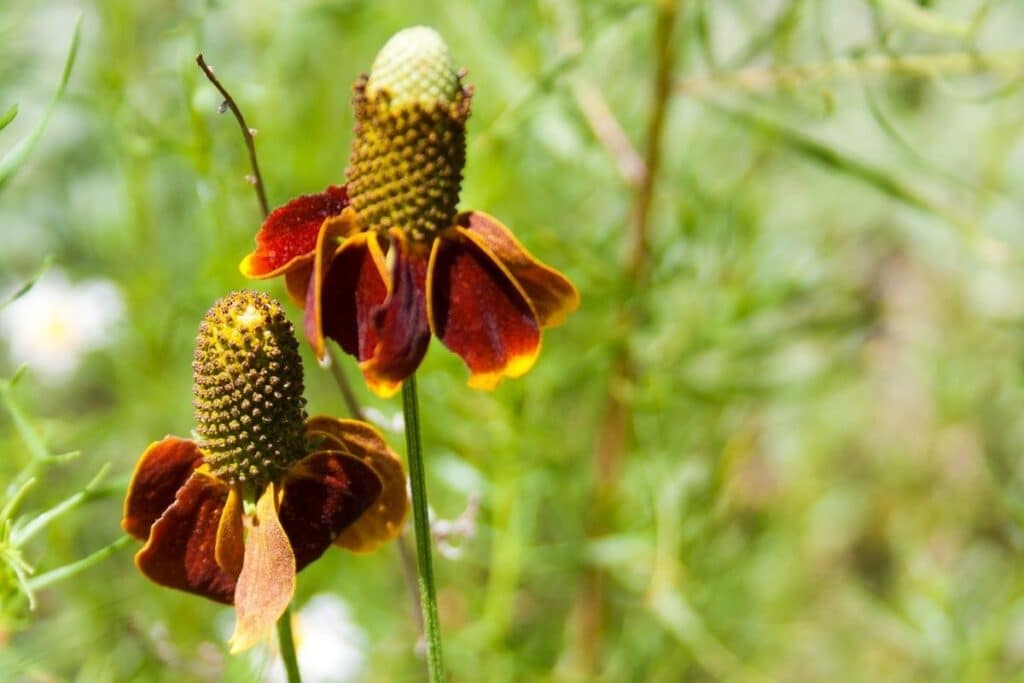One of the easiest plants to remember! You will not forget this flower’s name or shape, because the Mexican hat flower indeed resembles a Mexican “sombrero’’ (hat). This early bloomer will surely bring a smile to your face whenever you see it.
So, keep on reading and find out everything you need to know about Mexican hat flowers.
Facts about Ratibida Columnifera
The Mexican hat flower, thimble flower or Upright prairie coneflower is also scientifically known as Ratibida columnifera, and they belong to the Asteraceae or the (Aster) family of plants.

Because Mexican hat is one of those common Mexican flowers, many people will think they can only be found in Mexico, the truth is these plants are located in the western part of North America. Talk about confusion, hey!?
Not only are Mexican hat flowers easy to maintain, but they are also very drought-resistant, as they have tall stems that help them cool down whenever the weather is too hot. However, they prefer well-drained soil, as they will need it to thrive.
They also like to be placed directly under the sun, as they need to attract pollinators looking and interested in the flower’s valuable nectar.
While it’s not uncommon to encounter Mexican hat flowers with either solely yellow petals or solely dark red petals, their most remarkable feature is the pronounced upright seed heads that emerge from the center of the drooping petals
Although it is not uncommon to see some flowers with only yellow petals or with only dark red petals. The color palette of these coneflowers can range from reddish brown to a captivating blend of copper-black with a metallic blue-green head

If you are looking into planting a hardy perennial, look no further, the Ratibida columnifera flower is the one for your garden!
How to Grow and Care for Mexican Hat Flowers
How and When to Plant Mexican Hat

Plant Mexican Hat flower seeds directly in the garden after the last frost date in your area. Scatter the seeds over the prepared soil and lightly press them into the ground. Keep the soil consistently moist until the tiny seeds germinate, which usually takes 7 to 14 days. Thin out the seedlings to a spacing of 12 to 18 inches apart once they have developed their first true leaves.
Soil Requirements
Growing mexican hat flowers in well-draining soil with a slightly acidic to neutral pH level (around 6.0 to 7.0) is ideal. Sandy or loamy soil enriched with organic matter, such as compost or aged manure, works well for these wildflowers. Good drainage is essential to prevent waterlogging, which can lead to root rot.
Watering
Mexican Hat flowers have moderate water needs. Water the plants deeply but infrequently, allowing the soil to dry out slightly between waterings. Once established, they are somewhat drought-tolerant and can withstand periods of dry weather.
Avoid overwatering, as this can lead to root rot. Water at the base of the plant to keep the foliage dry and prevent fungal diseases.
Fertilizing
Mexican Hat flowers are relatively low-maintenance and do not require much fertilization. However, you can apply a balanced, slow-release fertilizer once in active growing season to promote healthy growth and flowering.
Follow the instructions on the fertilizer label for proper application rates. Avoid over-fertilizing, as excessive nutrients can lead to lush foliage at the expense of flowers.
Deadheading and Pruning
Deadheading spent flowers can prolong the blooming period of Mexican Hat flowers and encourage additional blooms. Simply pinch off the faded flowers as they wilt. In late fall or early winter, you can cut back the foliage to ground level to tidy up the plants and promote new growth in the early spring.
Sunlight
Mexican Hat flowers thrive in full sun to partial shade. Choose a location in your garden that receives at least 6 hours of direct sunlight per day. While they can tolerate light shade, too much shade may result in leggy growth and reduced flowering.
Pests and Diseases
Mexican hat flowers are generally resilient but may fall prey to common pests and diseases. Aphids and spider mites can infest the foliage, causing leaf distortion and yellowing.
If there are only a few Japanese beetles on the plants, pick them off by hand. If there are too many, put neem oil on them, or treat the soil with milky spore powder for better control.
Ensuring proper air circulation and avoiding overhead watering can mitigate the spread of powdery mildew. Vigilance in monitoring for these pests and diseases, coupled with prompt intervention, such as pruning affected foliage, ensures the continued health and beauty of Mexican hat flowers in gardens and landscapes.
Planting Location
Ideally, you will have enough space in your garden, and you will plant these cut flowers there. They won’t do well indoors, especially if you live in a cold climate.
However, once you have grow Mexican hat plants, you can place them indoors in beautiful containers. These potted plants will bring a pleasant scent to your house, and they will also catch everybody’s attention as they are truly unique!
Mexican Hat Flower Uses
This mexican hat plant has been used in several different ways throughout generations, such as:
- It is used to make sunny borders in the garden.
- It is used as an ornamental plant; ideally, you would have more than one to make a more significant impact.
- They can be used to improve a patch in your garden. If you have an area that receives lots of sunlight and has no idea what to plant there, you should definitely plant Mexican hat flowers!
FAQs
How much sun does Mexican hat need?
Yes, Mexican hat (Ratibida columnifera) prefers full sun to partial shade. It thrives in sunny locations with well-draining soil.
Should I deadhead Mexican hat?
Yes, deadheading Mexican hat can prolong its blooming period. Removing spent blooms prevents the plant from putting energy into seed production, promoting continuous flowering.
Is Mexican hat invasive?
No, Mexican hat is not considered invasive in most regions. However, it can self-seed readily, especially in favorable growing conditions. While it generally behaves well in garden settings, improper management can lead to its spread and potentially impact weaker plants nearby.
Is Mexican hat an annual or perennial?
Mexican hat is a short-lived perennial or biennial plant, depending on growing conditions and climate. In some areas, it may behave more like an annual, especially if temperatures drop below freezing during winter.
Conclusion
Finally, care for Mexican hat flowers guarantees that their brilliant beauty adds a special appeal to gardens and landscapes. By following the Mexican hat flower care tips in this piece, gardeners may raise flourishing specimens.
With proper care, Mexican hat flowers will thrive, decorating outdoor areas with their distinctive, bright blossoms and adding a touch of natural beauty to any floral arrangement.
More more easy to grow flowers, check this list: https://florgeous.com/types-of-flowers/
Image by depositphotos.com/[email protected]







